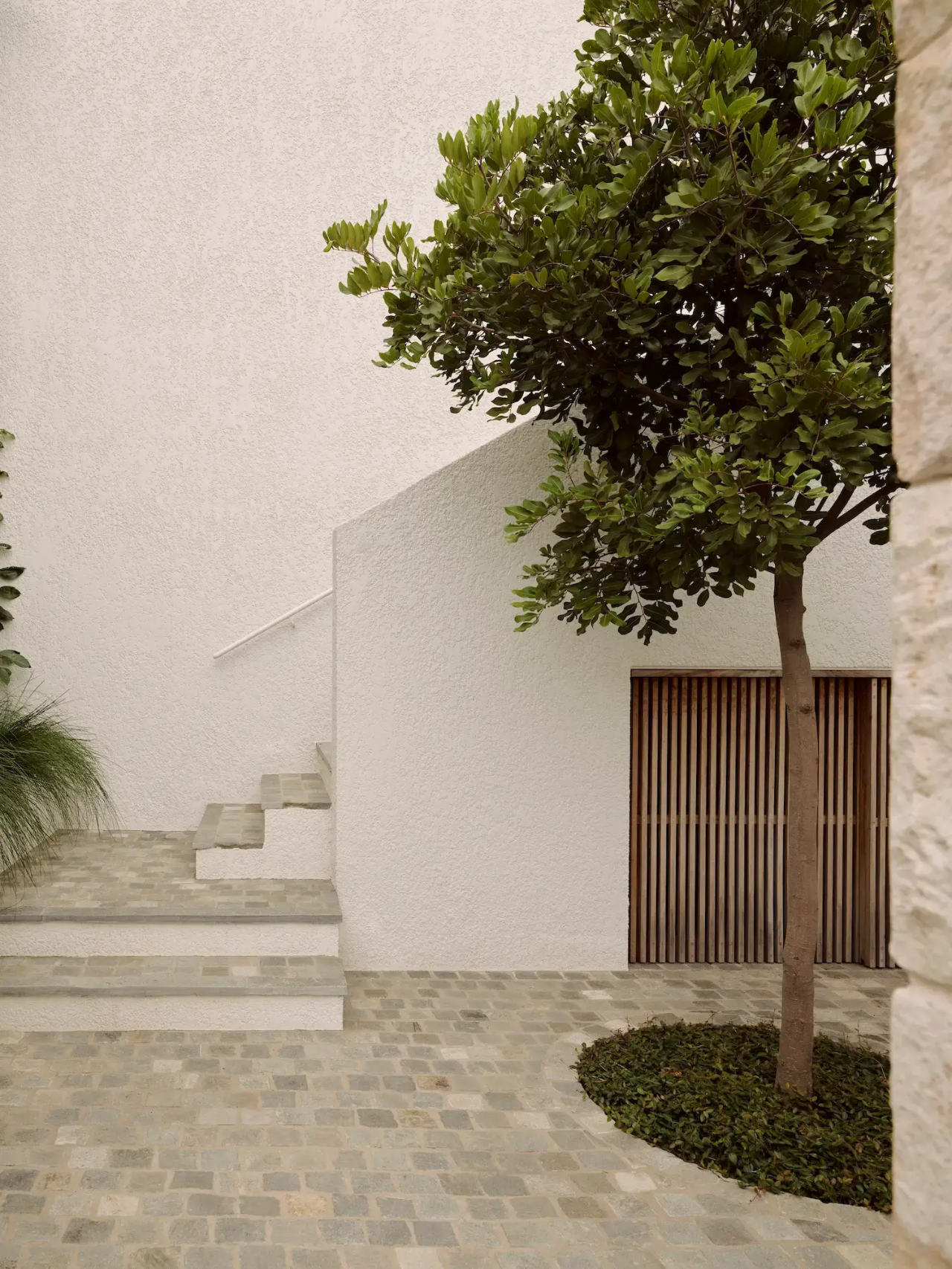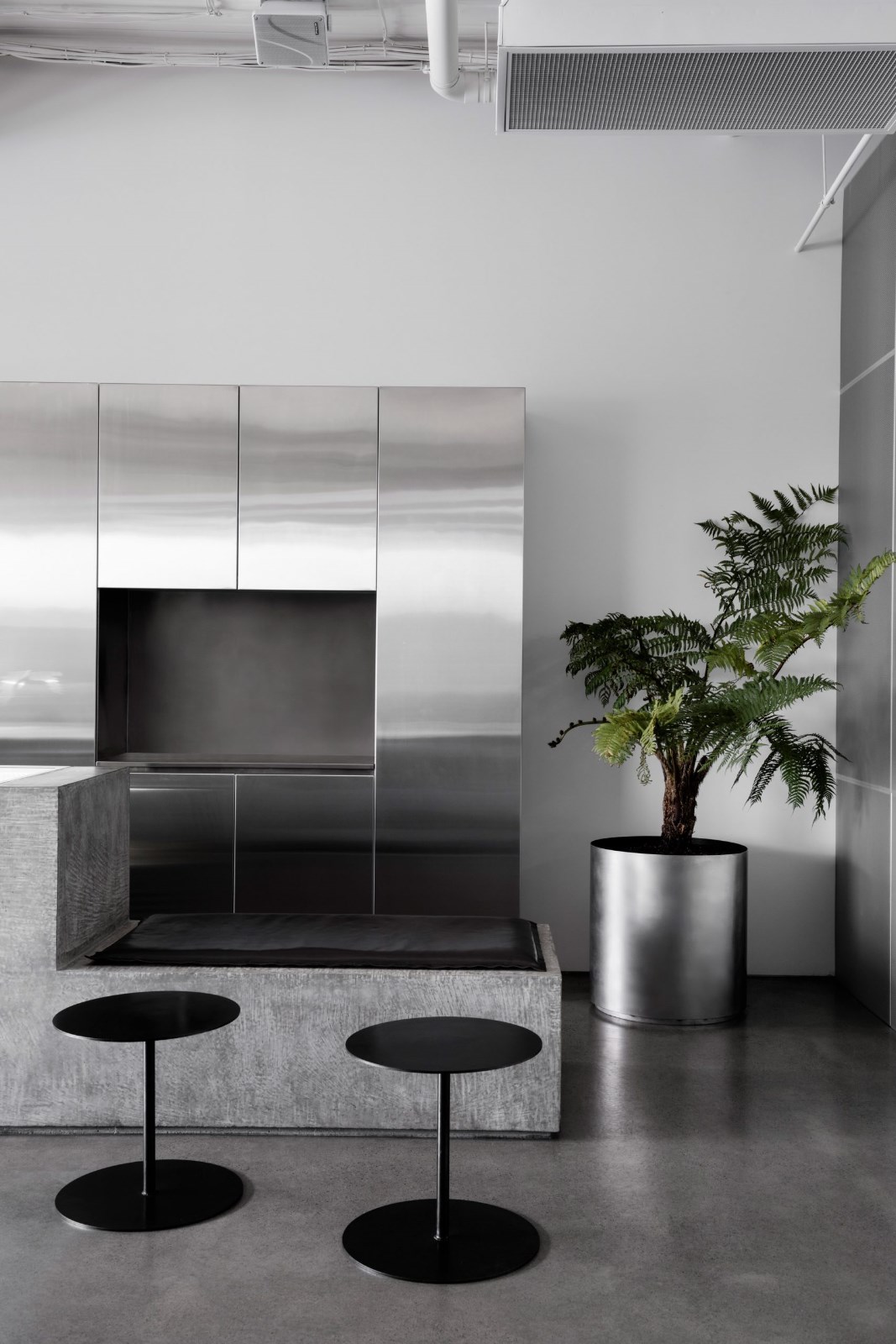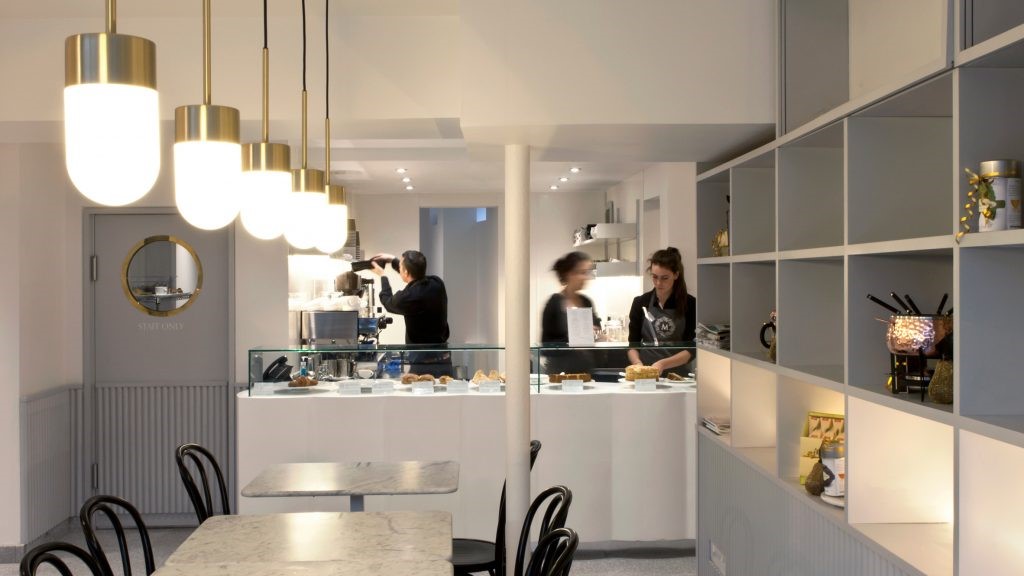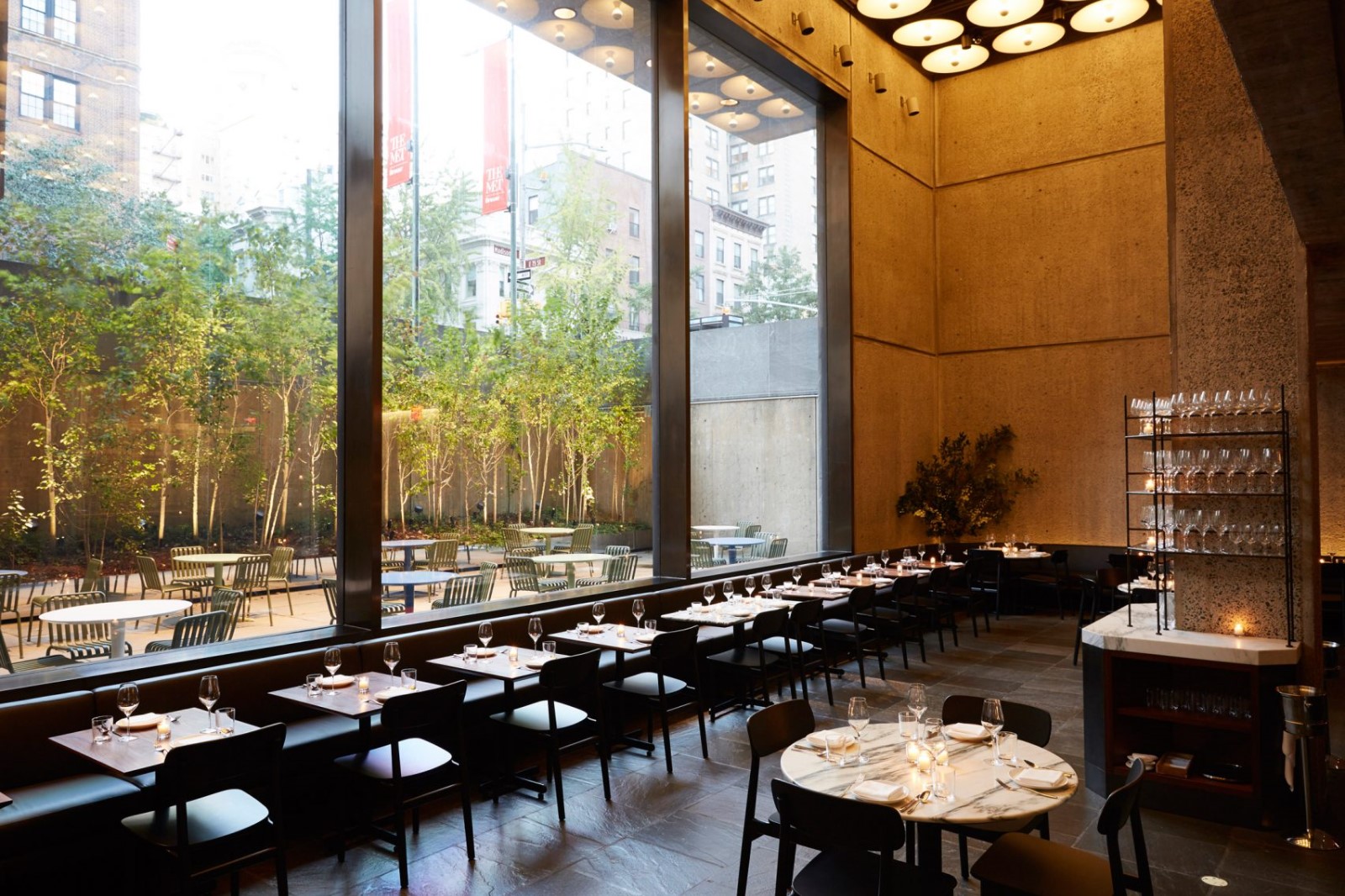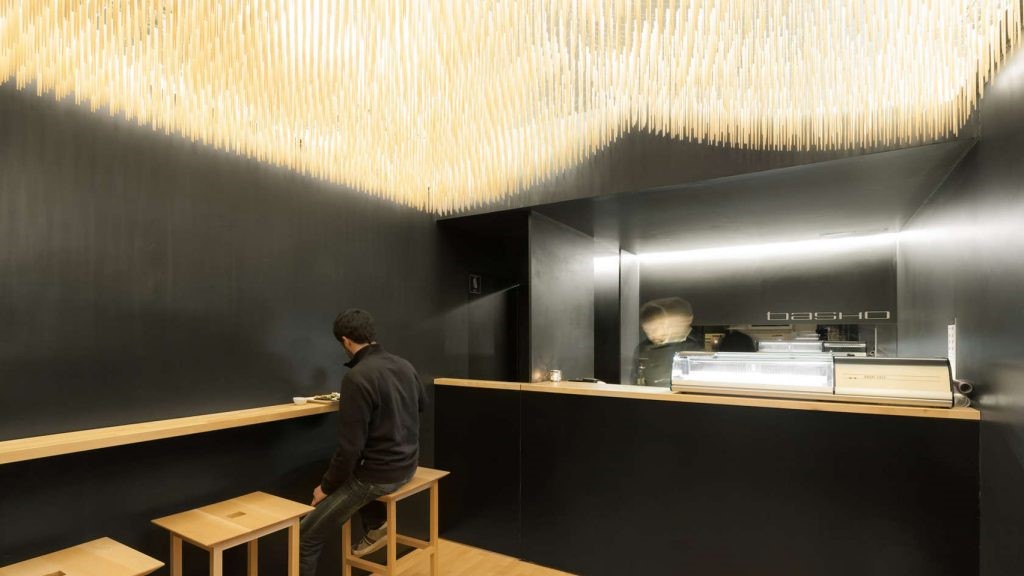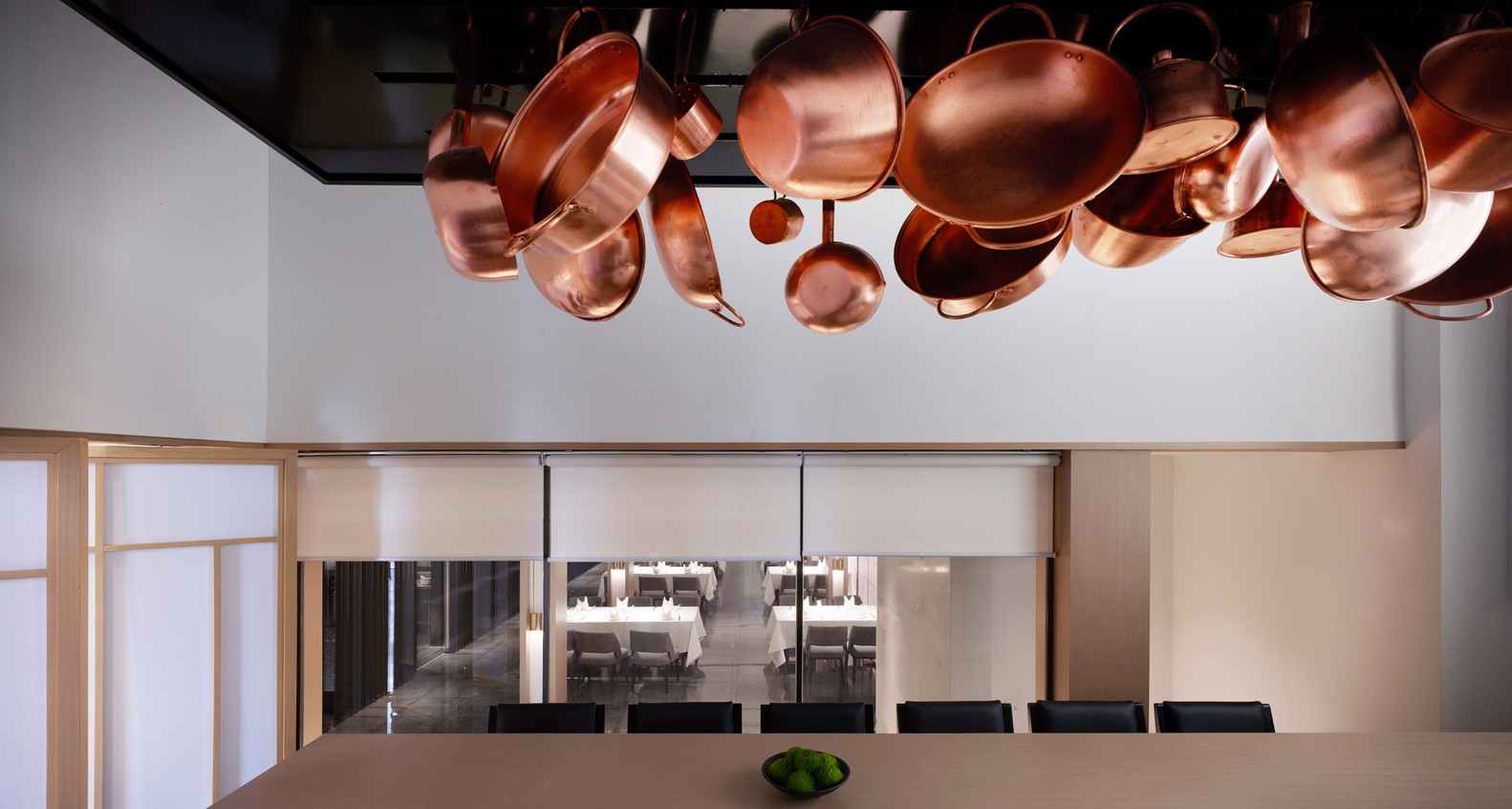Under the North Sea Snøhetta Reinvents the Underwater Restaurant
2019-08-05 18:21
To say that “Under”, Europe’s first underwater restaurant located in Lindesnes, Norway, has made a splash in architectural and culinary circles wouldn’t be an exaggeration. In fact, it’s quite a literal statement: designed by Norwegian architecture studio Snøhetta, the restaurant is half-sunken into the sea, its monolithic form breaking the surface of the water to rest directly on the seabed five metres below. Appearing as if a boat has been capsized or a building has toppled over into the sea, the restaurant is a bold architectural gesture that not only redefines the concept of the underwater restaurant and creates a new landmark in southern Norway, but also functions as an ecological paradigm, designed as it is to fully integrate into its marine environment over time. But more than that, “Under”, which in Norwegian means both “below” and “wonder”, challenges what determines a person’s physical placement in their environment. “In this building”, as Snøhetta Founder and Architect, Kjetil Trædal Thorsen explains, “you may find yourself under water, over the seabed, between land and sea. This will offer you new perspectives and ways of seeing the world, both beyond and beneath the waterline”.
说“在”下,欧洲第一家水下餐厅位于挪威的林德斯,已经在建筑和烹饪界引起了轰动,这并不是夸大其词。事实上,这是一个非常直截了当的说法:这家餐厅由挪威建筑工作室Sn hetta设计,半沉入海,它的整体形态打破了水面,直接躺在海底下面5米处。餐厅看上去像是一艘船被倾覆或一座建筑物倾覆入海,这是一种大胆的建筑姿态,它不仅重新定义了水下餐厅的概念,在挪威南部创造了一个新的地标,而且起到了生态范例的作用,其设计目的是随着时间的推移完全融入其海洋环境。但不仅如此,“下面”(在挪威语中的意思是“下面”和“好奇”)对决定一个人在环境中的身体位置的因素提出了挑战。正如Sn hetta的创始人和建筑师Kjetil Tr dal Thorsen所解释的,“在这座建筑中,你可能会发现自己在水下,在海床上,在陆地和海洋之间。这将为你提供新的视角和看待世界的方式,无论是在水下还是在水下“。
In the public’s imagination, the concept of the underwater restaurant is mostly associated with touristic destinations like Dubai or the Maldives where holidaymakers get to dine under arched glass structures surrounded by pristine turquoise waters. “Under” upends this stereotype both in location and sensibility, swapping the Instagram-friendly, tropical setting for the briny, murky waters of the North Sea, and the aquarium-like, funfair aesthetic for a modernist sophistication of Scandinavian finesse. Conceived as a sunken periscope, the restaurant takes the form of 34-metre long, concrete monolith at the end of which looms a massive window offering a mesmerizing view of the seabed as it changes throughout the seasons.
在公众的想象中,水下餐厅的概念主要与迪拜或马尔代夫等旅游目的地联系在一起。在那里,度假者们可以在由纯净的绿松石水域环绕的拱形玻璃结构下就餐。“下面”颠覆了这种在地理位置和情感上的刻板印象,把Instagram友好的热带环境换成了北海的咸水、昏暗的水域,以及水族馆般的、有趣的美学,以追求斯堪的纳维亚精巧的现代派风格。作为潜望镜,餐厅采用34米长的混凝土巨石的形式,它的尽头是一扇巨大的窗户,随着季节的变化,人们可以看到海底迷人的景色。
Located at the southernmost point of the Norwegian coastline where the North Sea meets the Kattegat Sea, Lindesnes is characterized by intense weather conditions that change from calm to stormy several times a day, making the restaurant’s unique architectural presence even more impressive by the fierce waves that often break against it. The rough weather, in combination with the barren landscape and craggy shoreline, makes for an inhospitable destination but that completely changes when visitors step inside where they are greeted by a hushed, oak-clad foyer. The foyer leads onto an elegant, oak staircase that descends deep into the building where the timber cladding give way to textile surfaces. Turning darker and more intense the deeper one goes below water, the bespoke textiles, stretched over acoustic panels, go from neutral hues to sunset pink, intense coral, sea green, and finally midnight blue in the dining room – an evocative metaphor for the visitor’s descent to the sea bed.
林德斯位于挪威海岸线最南端,北海与卡特加特海交汇处。林德斯内的特点是恶劣的天气条件,每天从平静到暴风雪,这使得餐厅独特的建筑风格更加令人印象深刻。恶劣的天气,加上贫瘠的风景和崎岖的海岸线,构成了一个不适宜居住的目的地,但当游客们走进一个安静的、穿着橡木的门厅迎接他们时,这种情况就完全改变了。门厅通向一个优雅的橡木楼梯,深入到建筑的深处,在那里木材覆层让位给纺织表面。海水越深,颜色越深,定制的纺织品就会延伸到隔音板上,从中性色调到日落粉色,强烈的珊瑚色,海绿色,最后是餐厅里的深蓝色-这是游客下降到海床的一个令人回味的比喻。
Enveloped in softly textured surfaces and low illumination, the 40-person dining room is imbued by a mysterious, meditative atmosphere made all the more awe-inspiring by the eleven-metre-wide, 3.4-metre-tall horizontal window that opens onto the sea bed outside. Glowing enchantingly as daylight filters down from the surface of the sea, the panoramic window is the room’s focal point throughout the day thanks to a sophisticated lighting system that regulates the room’s artificial lighting levels. Sourced from locally harvested Norwegian oak and crafted by a local carpentry workshop, the timber cladding has been designed with sustainability in mind, as have the bespoke tables and chairs which have been made using traditional handicraft methods. Sustainability has also been a key consideration behind the restaurant’s menu. Masterminded by Danish chef Nicolai Ellitsgaard from acclaimed restaurant Måltid in Kristiansand, and based on seasonal, locally-sourced produce, the dining experienced is a tour de force of creativity and refinement. As Ellitsgaard says, “just on the other side of our iconic window the ocean is bursting with fresh delicacies from the sea, so the journey from the kitchen to the plate is minimal”.
这间40人的餐厅被柔和的质感表面和低光照所包围,充满了神秘的冥想氛围,这11米宽、3.4米高的水平窗户打开了外面的海床,让人更加敬畏。当日光从海面上透出时,全景窗口迷人地发光,全天都是房间的焦点,这要归功于一个复杂的照明系统,它可以调节房间的人工照明水平。木材覆盖层是从当地收获的挪威橡木制成,由当地的木工车间制作,设计时考虑到可持续性,采用传统手工艺制作的定制桌椅也是如此。可持续性也是餐厅菜单背后的一个关键考虑因素。由丹麦厨师Nicolai Ellitsgaard从Kristiansand著名的M ltid餐厅策划,基于季节性的本地产品,这种用餐体验是一种创造性和精致的旅游力量。正如Ellitsgaard所说:“就在我们标志性的窗户的另一边,海洋里充满了来自海洋的新鲜佳肴,所以从厨房到盘子的旅程是很短的。”
Featuring half-metre-thick walls designed to withstand pressure and shock from the rugged sea conditions, the building’s structure was built on a barge twenty metres from the site, and submerged on the spot by filling it with water so it could be bolted to a concrete slab anchored to the bedrock. The roughness of the concrete shell functions as an artificial reef, welcoming limpets and kelp to inhabit it, eventually integrating this man-made into nature. And if that wasn’t enough to convince you of the project’s ecological bona fides, the building also functions as a research centre for marine biology and fish behaviour, with measurement tools such as cameras and sensors installed on and outside the building’s shell. The confluence of architecture and ecology, land and sea, above and below, is perhaps more evocatively conveyed by a vertical window that cuts into the side of the building where the concrete shell touches the sea. Extending from above sea level to the seabed, and from the mezzanine bar level to the dining hall below, it allows visitors to visually track their descent into the North Sea.
由于半米厚的墙能承受来自崎岖海况的压力和冲击,这座建筑的结构建在离现场20米的一艘驳船上,然后用水把它淹没,这样它就可以栓在锚定在基岩上的混凝土板上。混凝土外壳的粗糙起到了人工礁石的作用,它欢迎屋顶和海带栖息,最终将这一人造生物融入大自然。如果这还不足以让你相信该项目的生态诚意的话,该建筑还可以作为海洋生物和鱼类行为研究中心,在建筑物外壳内外安装相机和传感器等测量工具。建筑和生态,陆地和海洋的交汇点,无论是在上面还是下面,也许都是通过一个垂直的窗户来传达的,这个垂直的窗户会切入建筑物的一侧,在那里混凝土外壳与海洋接触。从海平面以上延伸到海床,从夹层酒吧水平延伸到下面的餐厅,游客可以在视觉上跟踪他们的下降到北海。
keywords:Restaurants Architecture Design
 举报
举报
别默默的看了,快登录帮我评论一下吧!:)
注册
登录
更多评论
相关文章
-

描边风设计中,最容易犯的8种问题分析
2018年走过了四分之一,LOGO设计趋势也清晰了LOGO设计
-

描边风设计中,最容易犯的8种问题分析
2018年走过了四分之一,LOGO设计趋势也清晰了LOGO设计
-

描边风设计中,最容易犯的8种问题分析
2018年走过了四分之一,LOGO设计趋势也清晰了LOGO设计












































































